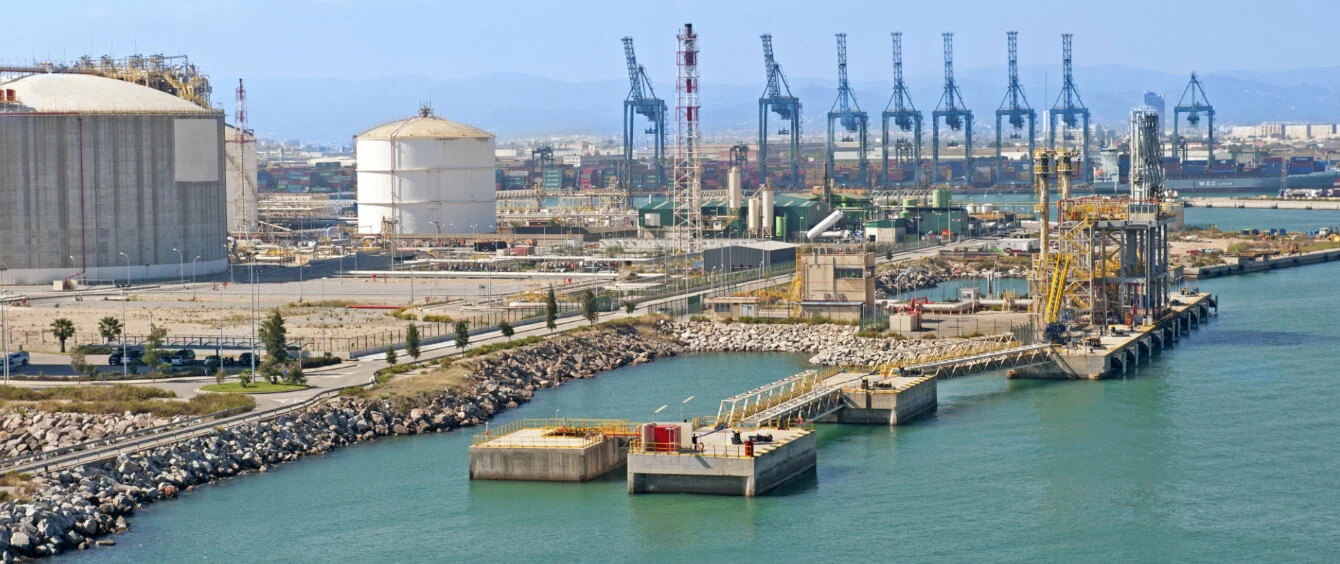In the wake of Russia’s invasion of Ukraine, Europe has been rushing to import liquified natural gas (LNG) as a replacement for Russian gas imports by pipeline.
In the first five months of this year, the EU and UK together imported an average 0.42 billion cubic metres (Bcm) of LNG a day, 66% higher than in 2021 and almost 50% higher than the pre-pandemic record of 2019, according to data from Cedigaz, an international gas industry organisation.
Stranded capacity
Strictly by the numbers, Europe, including Turkey, has a large amount of LNG import capacity – more than 170 million tons per annum (mtpa) spread across 17 countries, the equivalent of 231 Bcm/yr. In 2021, the EU imported about 155 Bcm of Russian gas and 102 Bcm of LNG.
However, a number of factors mean Europe’s LNG terminals cannot be used to their full extent:
- there is only a limited amount of LNG available globally and other countries, particularly in Asia, also rely on the fuel for a large part of their gas needs;
- Europe’s LNG terminals were not, for the most part, sited to replace Russian gas; and
- there is a lack of transmission capacity to move regasified LNG from the points of import to markets most reliant on Russia.
The most obvious example of spare import capacity is Spain, which has almost 60 Bcm of LNG import capacity, just over a quarter of Europe’s total. Yet, in 2021, the country, which also receives pipeline gas imports from Algeria, imported just under 19 Bcm of LNG.
In contrast, Italy, which is heavily dependent on gas in general and Russian gas imports in particular, has only about 15 Bcm/yr of LNG import capacity. This, in recent years, has been run at above 80% capacity and is now operating at maximum.
In 2020, Italy imported 19.7 Bcm of Russian pipeline gas and 12.1 Bcm of LNG from international suppliers, according to BP data, in total consuming 67.7 Bcm of gas. This leaves little room to boost LNG supplies from existing facilities.
Pipeline proposal
The ability to use Spain’s LNG import terminals more effectively is frustrated by a lack of transmission capacity across the mountainous Pyrenees between Spain and France, despite expansions in recent years.
A proposal for a new pipeline linking the two countries, known as MIDCAT, foundered because, at the time, gas flows between the two countries were predominantly north-south rather than south-north, reflecting a lack of onward transmission capacity from the south of France to areas of higher demand, such as north Italy and northern Europe.
However, a new proposal has now emerged to link the gas systems of Spain and Italy directly.
Snam, Italy’s gas pipeline operator, and Spain’s Enagas have started looking at the feasibility of an offshore pipeline running directly between the two countries with capacity of up to 30 Bcm/yr. The feasibility study is expected to last three to four months. An offshore pipeline should be quicker to build than an onshore one because of the lack of surrounding human habitation and economic activity, which complicates and prolongs permitting processes.
The pipeline would run 700 kilometres subsea between Barcelona’s regasification terminal and the northern Italian port of Livorno. According to local reports, the project would cost $2.66 billion and take one to two years to build.
As well as improving the supply of gas to Italy, the pipeline could be used to take regasified LNG further into central Europe via existing pipelines.
LNG market expansion
Italy is also looking at an ‘EastMed’ gas pipeline, which could tap into gas resources off the coasts of Israel, Egypt and Cyprus. In addition, Italy plans to add LNG regasification capacity domestically via the chartering of additional Floating Storage and Regasification Units. So, too, are other European countries, most notably Germany, which currently lacks any LNG import capacity at all.
As European regasification capacity rises, importing countries will be dependent on the expansion of LNG supply globally. This is likely to take a number of years as the US and Qatar, in particular, ramp up their liquefaction capacities substantially.
Qatar is on track to expand its liquefaction capacity from 105 Bcm to 171 Bcm by 2026/27 in two phases, most recently announcing a number of foreign partners in the venture. Meanwhile, a final investment decision was taken in May by US company Venture Global on the 17.7 Bcm phase 1 development of its Plaquemines LNG plant. Other US LNG developers are expected to follow suit.
As a result, while not an immediate solution to Europe’s gas crisis, an offshore Spain-Italy pipeline could be in place in time to take advantage of growth in the global LNG market.
